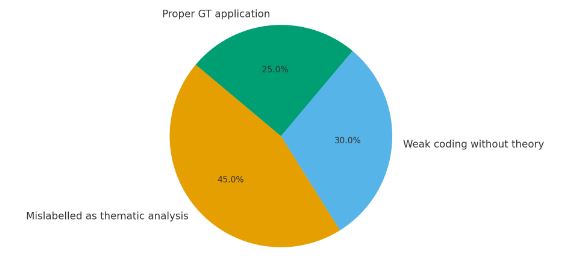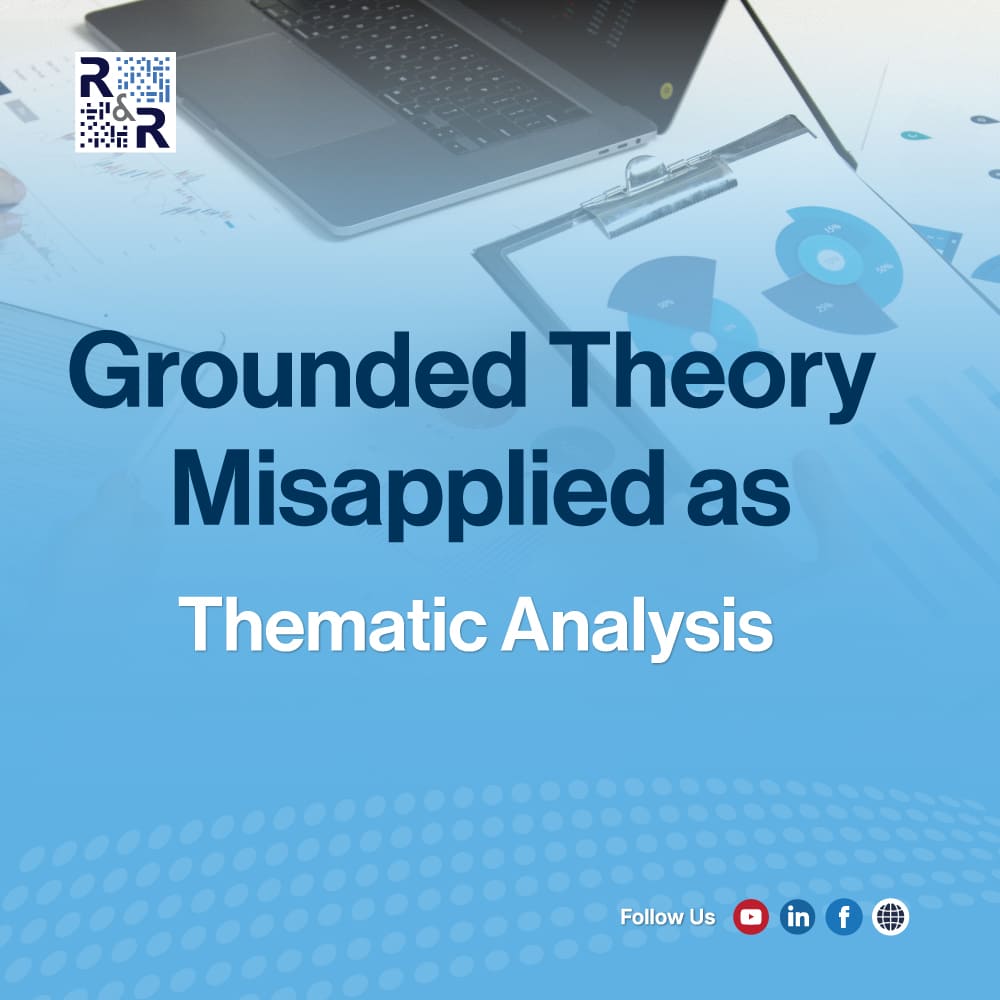Grounded Theory (GT) is one of the most respected qualitative methodologies, designed to move beyond description into theory generation. Yet, many researchers misapply GT as if it were merely a version of thematic analysis. This error weakens contributions, misleads readers, and leads to journal rejection.
Grounded Theory is not about “coding until themes appear.” Instead, it is about developing mid-range theory grounded in data through rigorous and iterative procedures. When researchers skip these steps, they reduce GT to descriptive analysis, losing its explanatory power.
Grounded Theory vs. Thematic Analysis
| Aspect | Thematic Analysis | Grounded Theory |
|---|---|---|
| Purpose | Identifies patterns or themes | Builds theory from data |
| Data Collection | Usually fixed sample | Theoretical sampling, guided by emerging categories |
| Coding Process | Basic coding → themes | Open, axial, and selective coding with constant comparison |
| Output | Descriptive themes | Explanatory mid-range theory |
Source: Adapted from Braun & Clarke, 2006; Charmaz, 2014
Critical Issues Most Researchers Overlook
1. No Theory Building
Thematic analysis describes; GT explains. If researchers stop at listing categories, they abandon GT’s purpose—theory generation (Glaser & Strauss, 1967).
2. Skipping Constant Comparison
GT requires iterative comparison—data with data, codes with codes, categories with categories. Without this, findings remain superficial.
3. Ignoring Theoretical Sampling
GT evolves as data collection follows emerging insights. Rigid sampling undermines this flexibility for theory development.
4. Weak Methodological Anchoring
Many label their study as GT without referencing Glaser, Strauss, Corbin, or Charmaz. This weakens methodological depth and scholarly credibility.
Why Misapplication Matters
- Loss of Credibility – Experts and reviewers easily detect GT misused as thematic analysis.
- Missed Contribution – Studies stay descriptive, failing to advance theory or scholarly debates.
- Methodological Confusion – Dilutes GT’s identity, confusing future researchers.
How to Apply Grounded Theory Correctly
At Research & Report Consulting, we guide scholars to apply GT rigorously:
- Follow Core Procedures – Open, axial, selective coding with constant comparison.
- Engage in Theoretical Sampling – Let categories direct further data collection.
- Use Memo Writing – Record insights as they emerge for analytical depth.
- Move Beyond Description – Explain processes, mechanisms, and relationships.
- Anchor in Methodology – Connect explicitly to Glaserian, Straussian, or Constructivist GT traditions.

Figure: Misuse of Grounded Theory in Published Studies, Source: Adapted from Birks & Mills, 2015
Final Thought
Grounded Theory and thematic analysis may appear similar, but the difference is fundamental:
- Thematic analysis = identifies themes.
- Grounded Theory = builds theory.
At Research & Report Consulting, we help researchers ensure their studies are rigorous, credible, and theoretically impactful. Because in research, credibility comes from depth—not shortcuts.
Question for Readers:
Have you ever faced challenges distinguishing between thematic analysis and grounded theory in your research?
References
- Glaser, B., & Strauss, A. (1967). The Discovery of Grounded Theory. Aldine.
- Charmaz, K. (2014). Constructing Grounded Theory. Sage.
- Braun, V., & Clarke, V. (2006). Using thematic analysis in psychology. Qualitative Research in Psychology, 3(2), 77–101.
- Birks, M., & Mills, J. (2015). Grounded Theory: A Practical Guide. Sage.

